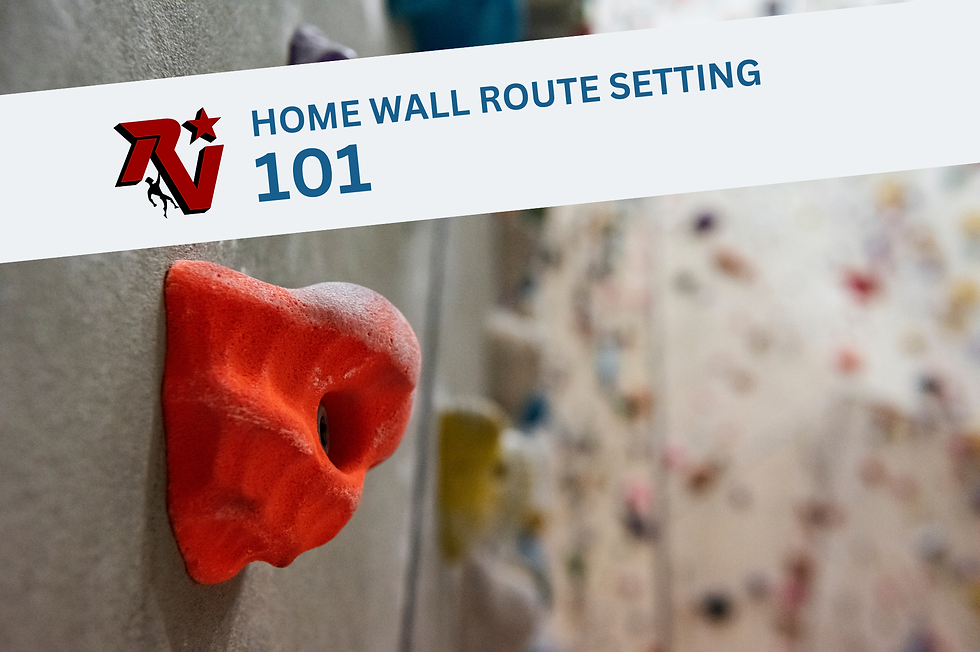The Rock Climber's Rotation: Train Hard, Try Hard, Recover Hard
- Dovi Hirsch
- Feb 21, 2023
- 3 min read
by Christopher Schafenacker

Trying to get stronger at climbing? Training like it was your job? Not seeing results? Anyone who’s been bitten by the climbing bug knows the story and, likewise, probably knows what coming next. Yes, your problem is rest (or lack thereof). You know it. We know it. And yet most of us don’t do it nearly as much as we should. This article probably won’t change that but, hey, we’ve gotta try.
Recovery 101: Why Rest Days Don’t Cut It
Climbers are weird athletes. In no other sport do practitioners try to hit peak performance every single session, ad infinitum, until an eventual injury. And yet in climbing this isn’t just common, it’s gospel.
Spend a week at a given climbing gym and you’ll meet a rotating cast of crushers that all seem bent on training themselves into a deeper recovery deficit than the next. This isn’t because they don’t take rest days—they do, at least sometimes—it’s because they don’t take rest weeks.
Effective training for climbing is cyclical. If you’re a boulderer, you probably want to complete a strength cycle before moving onto a power cycle. If you’re a route climber, you probably want to do a strength cycle, power cycle, and then an endurance cycle. In either case, you want to program a de-load week between each phase and, here’s the crux, a de-load month at least once a year.
De-Load Week? What’s That?
A de-load week is the equivalent of calling vegetables “rainbow food” so your kids won’t spit them into napkins and try to flush them down the toilet. It’s a fancy term tired coaches have invented to cover up the unsavory idea of “rest.” It’s also the only time in your training cycle that you get stronger and so it’s important not to skip.
Training is basically a matter of inflicting calculated injury on your body (a.k.a. pushing past your comfort zone), stopping before you actually hurt yourself, and then resting so you can bounce back stronger. Doing this between sessions is great but, eventually, you need a longer break.
A standard, four-week training cycle will include three weeks of progressive loading, followed by a de-load week. Depending on your goals, this may then be followed by another cycle of the same or progression to a new cycle focussed on a different ability. After a few turns of the training wheel, it’s time to send and then take a well-deserved longer break.
Sound boring? Maybe… but not nearly as boring as falling on your project for an entire season or, worse, getting injured and spending Sendtember on belay duty.
Featured Climbing Training Gear
Maverick: The on-the-go, bring it anywhere hangboard. On a family road trip to keep your fingers in shape. We like to bring this to the crag with us to keep our fingers warm—without losing skin on mediocre warm-ups—at that steep, thuggy sport crag.
The Rocket Wall: Available in 6’ and 8’ widths, it’s been tough for us to keep up with the demand for this innovative home climbing wall solution. Slightly overhanging, the Rocket Wall is big enough to set routes on, or to build a systems board.
The Rock-Stah: Our handcrafted version of a traditional hangboard, with curving crimp rails to help alleviate unnecessary strain on your pulleys. Because ain’t no one got time for a finger injury…
The Rocketeer Wall: our free-standing adjustable solution for those who can’t mount a hangboard anywhere in their home or apartment—or who are limited on space. The Rocketeer gives climbers the additional option to set specific climbing holds. Recreate the crux holds of your proj and get ready to send, bruh.











Comments